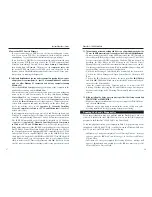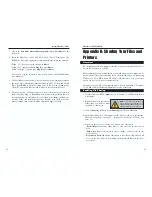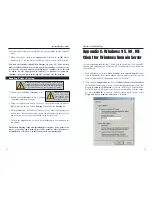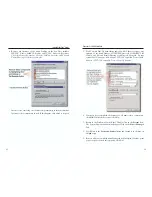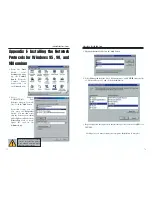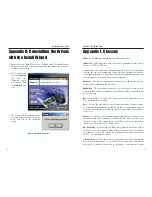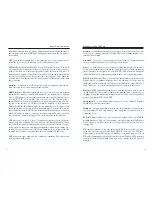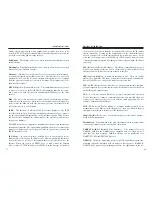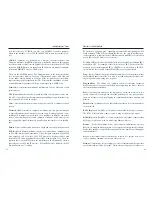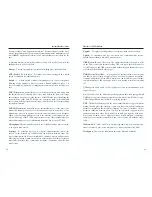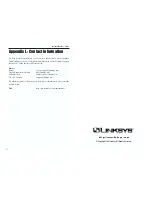
EtherFast
®
10/100 LAN Card
Instant EtherFast
®
Series
Upgrade
- To replace existing software or firmware with a newer version.
Upload
- To transmit a file over a network. In a communications session,
upload means transmit, download means receive.
URL
(
U
niform
R
esource
L
ocator) - The address that defines the route to a file
on the Web or any other Internet facility. URLs are typed into the browser to
access Web pages, and URLs are embedded within the pages themselves to pro-
vide the hypertext links to other pages.
USB
(
U
niversal
S
erial
B
us) - A "plug and play" interface between a computer
and add-on devices (such as audio players, joysticks, keyboards, telephones,
scanners, and printers). With USB, a new device can be added to your comput-
er without having to add an adapter card or even having to turn the computer
off.
USB supports a data speed of 12 megabit per second, accommodating a wide
range of devices.
Since October, 1996, the Windows operating systems have been equipped with
USB driver or special software designed to work with specific I/O device types.
USB is integrated into most Windows operating systems.
UTP
- Unshielded twisted pair is the most common kind of copper telephone
wiring. Twisted pair is the ordinary copper wire that connects home and many
business computers to the telephone company. To reduce crosstalk or electro-
magnetic induction between pairs of wires, two insulated copper wires are
twisted around each other. Each signal on twisted pair requires both wires.
Since some telephone sets or desktop locations require multiple connections,
twisted pair is sometimes installed in two or more pairs, all within a single
cable.
Wake-on-LAN
- Wake on LAN is a technology that allows a network profes-
sional to remotely power on a computer or to wake it up from sleep mode.
Workgroup
- Two or more individuals that share files and databases.
84
83
"system software" and "application software." System software is made up of
control programs such as the operating system and database management sys-
tem (DBMS). Application software is any program that processes data for the
user.
A common misconception is that software is data. It is not. Software tells the
hardware how to process the data.
Storage
- The semi-permanent or permanent holding place for digital data.
STP
(
S
hielded
T
wisted
P
air) - Telephone wire that is wrapped in a metal
sheath to eliminate external interference.
Switch
- 1. A data switch connects computing devices to host computers,
allowing a large number of devices to share a limited number of ports. 2. A
device for making, breaking, or changing the connections in an electrical cir-
cuit.
TCP
(
T
ransmission
C
ontrol
P
rotocol) - A method (protocol) used along with
the Internet Protocol (Internet Protocol) to send data in the form of message
units between computers over the Internet. While IP takes care of handling the
actual delivery of the data, TCP takes care of keeping track of the individual
units of data (called packet) that a message is divided into for efficient routing
through the Internet.
TCP/IP (T
ransmission
C
ontrol
P
rotocol/
I
nternet
P
rotocol) - is the basic com-
munication language or protocol of the Internet. It can also be used as a com-
munications protocol in a private network (either an intranet or an extranet).
When you are set up with direct access to the Internet, your computer is pro-
vided with a copy of the TCP/IP program just as every other computer that you
may send messages to or get information from also has a copy of TCP/IP.
Throughput
- The amount of data moved successfully from one place to anoth-
er in a given time period.
Topology
- A network's topology is a logical characterization of how the
devices on the network are connected and the distances between them. The
most common network devices include hubs, switches, routers, and gateways.
Most large networks contain several levels of interconnection, the most impor-
tant of which include edge connections, backbone connections, and wide-area
connections.


